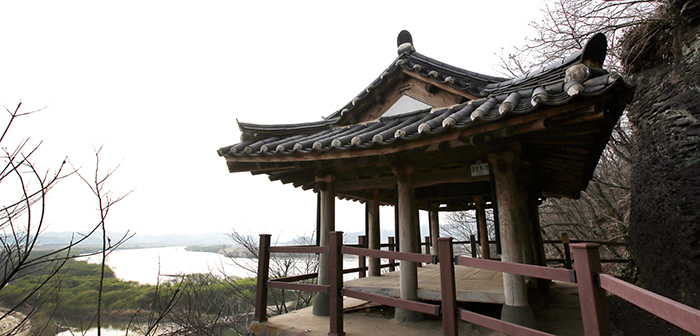
The Agyangru in Haman County offers clear views of the Namgang River and of the side paths adjacent to the dike.
Agyangru, Mujnjeong, Waryongjeong, Hapgangjeong and Gwangsimjeong. These are the pavilions you can see across Haman-gun County. Surrounded by the Namgang River, you can discover the pavilions while walking along the river in Haman. When looking at the surrounding view from the pavilion, everyone realizes the true meaning of a pavilion as found in a dictionary: an ornamental building in a garden or park from which to enjoy a good view or in which to rest, while enjoying the fair view and a fresh spring breeze.
Most pavilions in Haman County were built during Joseon times (1392-1910) and were not solely built just to appreciate a good view. They were used as a venue where the seonbi, or Joseon scholars, would exchange their academic opinions or have social gatherings or banquets. As many pavilions can be seen along the river and streams of the region, it shows that in the past Haman had many scenic spots and many scholars.
In 1633, the 11th year of the reign of King Injo (r. 1623-1649), the Hapgangjeong Pavilion was used by Jo Imdo, a scholar who spent the rest of his life focusing on academic studies after refusing to serve as a public servant. The Gwangsimjeong Pavilion was built by Confucian scholar Song Jiil in 1664 to conduct academic research, the fifth year of the reign of King Hyeonjong (r.1659-1674). The Waryongjeong Pavilion was built by Hong Cheoltae for his teacher. Both Hong and his teacher took the national state examination, the gwageo, but he found out that only he passed the exam, not his teacher.
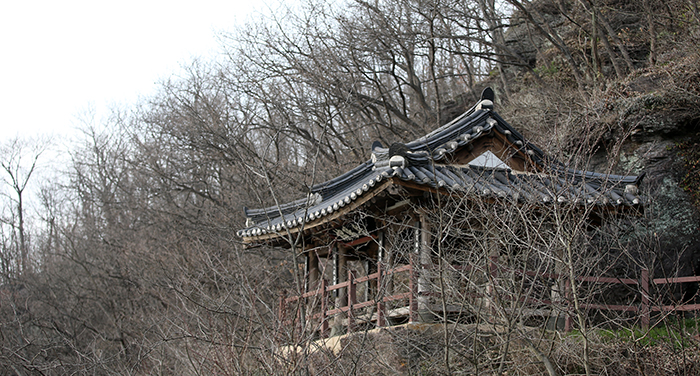
Surrounded by trees with no new buds yet, the Agyangru Pavilion is situated on a cliff near the Namgang River.
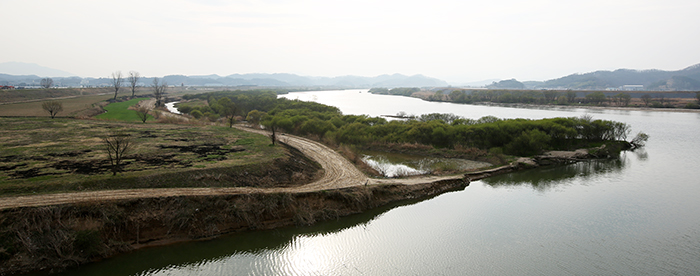
The above photo of the Namgang River and the path along the dike is taken from the Agyangru Pavilion. A marathon is held along the path every year.
Among the pavilions, with their great view and stories, is the Agyangru Pavilion built in 1857, the fifth year of the reign of King Cheoljong (r.1849-1863). Here one can fully enjoy a stunning view and the sunset over the Namgang River. It is built on the bluff atop the river. The two waterways -- the Namgang River and the Hamancheon Stream -- meet underneath the pavilion. It also offers a view of the dike -- the Beopsu Dukbang in Korean – which holds back the river. When the canola flowers are in full bloom along the path, the flowing river and the flowers move along in the breeze, making people excited and feel romantic. Along the dike path, visitors can find various plants, including canola flowers, green barley and wild flowers. Starting last year, a marathon is held along the path each year.
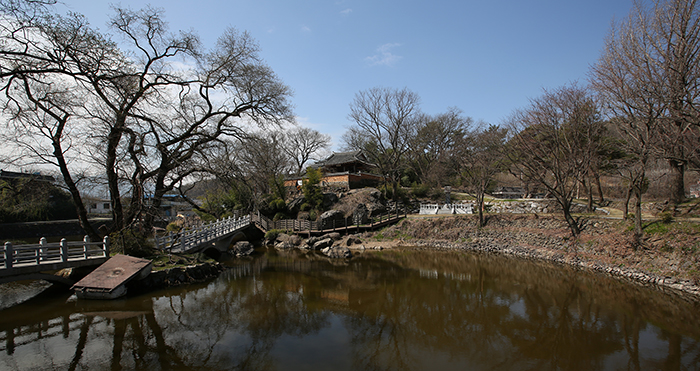
Located on a hill next to a lake, the Mujinjeong Pavilion used to be a venue for scholars to appreciate artistic taste and to socialize.
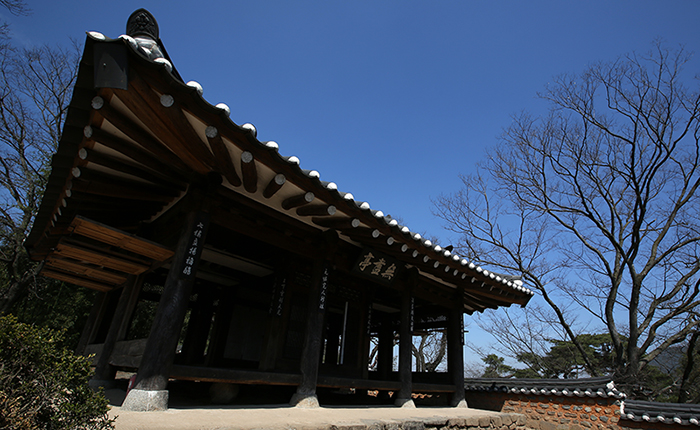
The Mujinjeong Pavilion has a humble and simple form, being built in early Joseon times with no decorations or engravings.
Across Haman, pavilions can be found in other places, too, apart from the riverside. Built between Gaya-eup and Haman-myeon, the Mujinjeong Pavilion was built by Jo Sam in 1473, the fourth year of King Seongjong (r. 1470-1494). It was named after his pen name. This pavilion was built as a venue in which to cultivate his students and to spend the rest of his life. It shows a humble and simple style among pavilions built in early Joseon times, showcasing a unique view by harmonizing with the adjacent lake, according to the season.
Article by Jeon Han, Yoon Sojung
Photos: Jeon Han
Korea.net Staff Writers
hanjeon@korea.kr
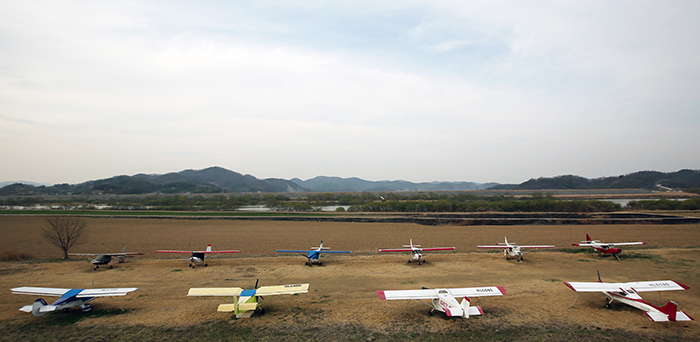
In addition to the pavilions, a landing strip can be found along the dike path aside the Namgang River, taking advantage of the long and wide open spaces.
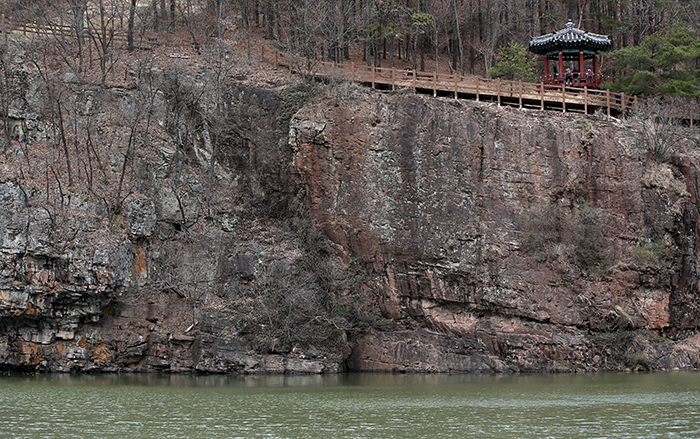
A pavilion is located next to a walking path on a cliff in Ipgok County Park in Haman County.
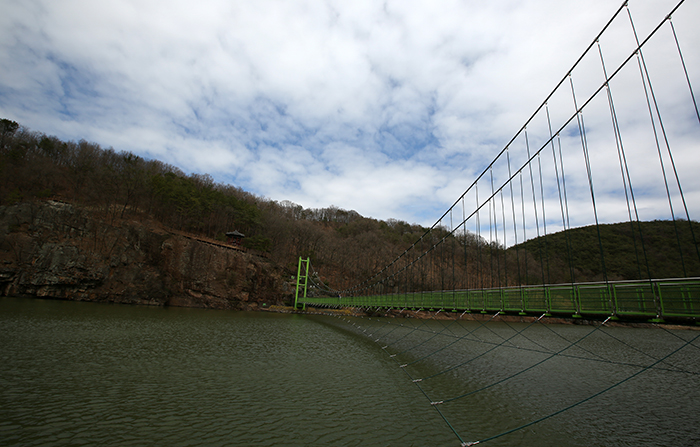
Visitors can find a suspension bridge linking both sides of a reservoir while walking along the pathways in Ipgok County Park. This park well-preserves the ecosystem and Mother Nature.